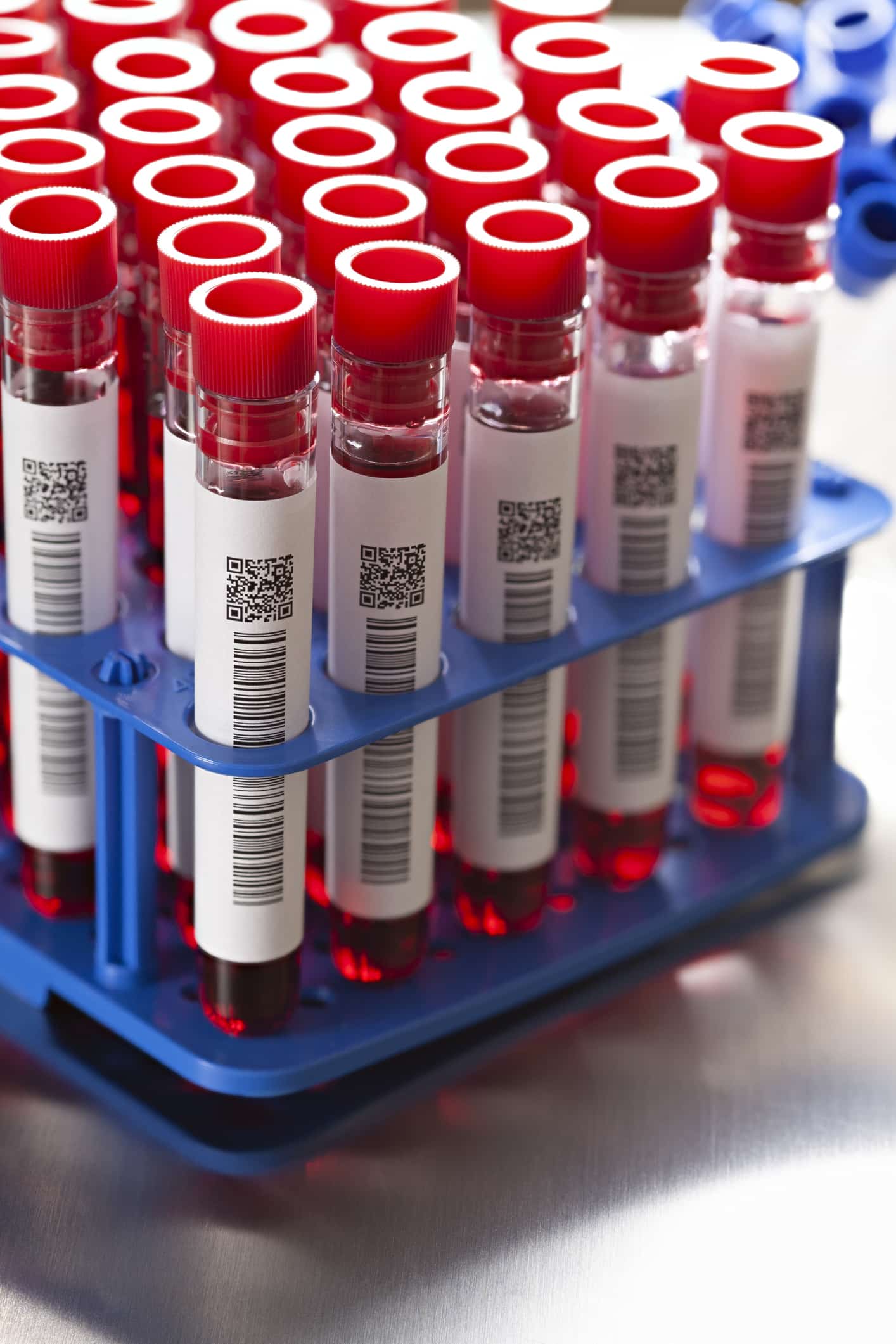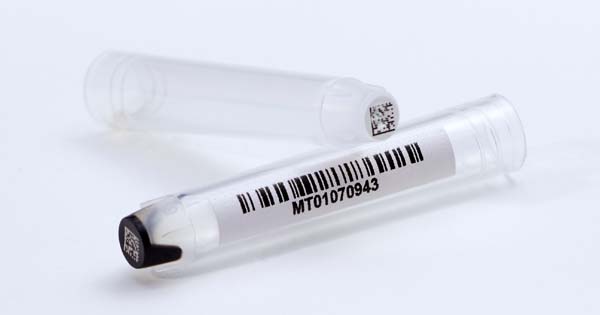The Computype Healthcare Team of labeling experts works with labs worldwide that are consistently expected to perform more research in shorter amounts of time, often with fewer dedicated resources and budgets. A common challenge in both the discovery and diagnostic world is that researchers don’t always have the necessary tools or time to perform seemingly tactical administrative tasks like container labeling with the required accuracy.
Researchers are often too busy with other work to label samples manually, and investing in label automation isn’t always within budget or scope. This poses the question, ‘How do we reduce lab costs and improve efficiencies without adding staff or capital expenditure?’
Many labs don’t know that there are labware barcode outsourcing programs available. Partnering with the correct label solutions provider will enable your facility to achieve high throughput labeling consistency and manage costs. In this article, we’ll outline how adopting an outsourcing labeling strategy may help your lab reduce costs and improve efficiencies.
1. Your scientists need to be focused on science, not labels.
From small startup labs to global diagnostic operations, it’s not uncommon for skilled scientific staff to be responsible for nominal activities like labeling or tare weighing containers. Although these tasks are critical to maintaining accuracy and proper chain of custody, they take time away from your team’s central research goals.
The opportunity cost of enlisting a Ph.D. level scientist to spend even just 1 hour a week on labeling tasks is monumental when you span that out over a month, year, or even 5-year time frame. Depending on your process, it’s non-negotiable that activity surrounding labeling or tare weighing has to occur, so the question becomes, ‘Is there a better, more efficient means of accomplishing this?’
Outsourcing the activities associated with container labeling enables scientific staff to focus more of their time on the productive, skilled work their experience and education have qualified them for. Think of the added research or faster time to market that your group could achieve if ancillary tasks were no longer a distraction. Additionally, job satisfaction will likely improve when container labeling is removed from the ‘other duties as assigned’ element in many of our job descriptions.

2. Labeling samples by hand takes too much time.
Simply stated, manual labeling limits throughput speeds regarding how many containers can be labeled within a specific amount of time and related to performance with downstream automation.
Even the fastest folks we’ve encountered can only apply labels to tubes at a rate of 10 per minute. Add gloves to the equation, and that number dramatically decreases. One labeling error (wrong label for that tube), and now you have the dilemma of trying to relabel vs. throwing the entire container away. The point remains that manual labeling is inconsistent. Regarding throughput and placement, it’s hard to measure precisely how much time it should take to complete a labeling project.
From a bigger perspective, it can get nerve-wracking if your process includes downstream automation that relies on the automatic scanning of a barcode. If labels are manually applied and incorrect placement of a barcode label results in a non-scan, an entire process could come to a grinding halt. Outsourcing your labeling process eliminates unscannable barcodes and ensures your barcoded containers integrate efficiently with your automated processes.


3. Labeling workstations take up too much real estate in your lab.
Physical space is a challenge we see in labs all over the world. Especially for rapidly expanding or growing, it can be challenging to stay organized in a cluttered or chaotic space. While it may not be feasible to break your lease or completely change locations to achieve extra real estate, reducing inventory and adopting a lean methodology can help in the short term.
Aside from housing labware, rolls of labels, and potentially the technology associated with printing them, you also have to clear out space to perform the labeling task. We typically see this process at a dedicated table in a common area or at individual workstations. Either way, your space is valuable, so it’s worth reconsidering how you utilize bench space and supply rooms.
When making the consideration to outsource, take into account more than just the space of the labels themselves. A good supplier can procure your specified labware, apply barcodes, custom pack the finished product, and ship them when needed. This means that labs only have to inventory what they need in the short term, in the form of a finished good instead of parts.
4. Sourcing labware, labels, and printers from different suppliers is challenging to manage.
Reducing and streamlining the number of suppliers you work with is almost a surefire way to save costs, gain buying power, and streamline administrative work. A barcode label is no good without its complimentary container, just as the best glass labware is worthless to your lab if you can’t track it. Consider sourcing materials and supplies from partners that offer solutions instead of just singular products. In addition, assessing how you utilize standard lab supplies and plotting out how, when, and who they are sourced from can provide big wins related to costs and administrative effort.
Suppose you’ve been considering a different approach to labware labeling. In that case, hopefully, this article has provided insight into how you may improve efficiencies and reduce costs by implementing an outsourcing strategy. It is essential to find the right outsourcing balance for your organization. While it can be a convenient means of streamlining processes and increasing accuracy, you are releasing some control of the labeling processes to a solutions provider. In addition, outsourcing is only a viable option if your labeling strategy doesn’t include on-demand information.
Remember, the right partner must be able to handle your workload, offer the technology and resources to fulfill its promises, and be flexible enough to provide a consistent solution that enhances your existing processes. In this way, choosing a suitable partner sets your organization up for success in improving lab costs and efficiencies.
